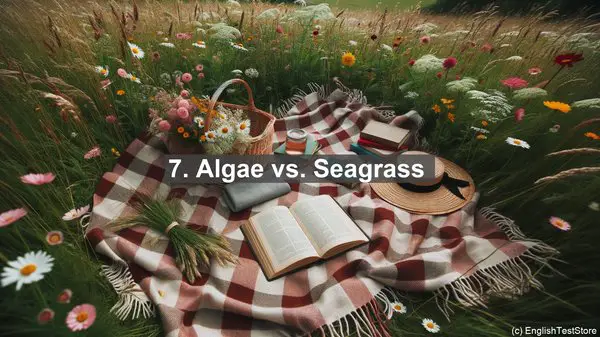Introduction
Welcome to today’s lesson on the top 10 commonly confused words in coral reef studies. As you dive deeper into this fascinating field, it’s essential to have a strong grasp of these terms. Let’s get started!
1. Coral vs. Coral Polyp
One of the most fundamental distinctions is between ‘coral’ and ‘coral polyp.’ While ‘coral’ refers to the entire organism, ‘coral polyp’ specifically denotes the individual animal that forms the coral colony. Understanding this difference is crucial when discussing coral reproduction and growth.
2. Bleaching vs. Bleached
When we talk about ‘bleaching’ in coral reefs, it means the loss of the coral’s vibrant color due to stress. However, ‘bleached’ refers to the state of the coral after it has undergone bleaching. This distinction is vital in assessing the health of coral ecosystems.
3. Zooxanthellae vs. Zooxanthellate
Zooxanthellae are the tiny, photosynthetic organisms that live within coral tissues. On the other hand, ‘zooxanthellate’ describes corals that have a symbiotic relationship with these organisms. Understanding this term helps us comprehend the interdependence within coral reef ecosystems.

4. Fringing Reef vs. Barrier Reef
Both ‘fringing reefs’ and ‘barrier reefs’ are types of coral reef formations. However, the key difference lies in their proximity to the shore. Fringing reefs are directly attached to the coastline, while barrier reefs are separated by a lagoon. This distinction is crucial when studying reef geography.
5. Atoll vs. Cays
An ‘atoll’ is a ring-shaped coral reef that encircles a lagoon. On the other hand, ‘cays’ are small, low-lying islands made of coral debris. Recognizing these terms helps us understand the diverse features of coral reef landscapes.
6. Benthic vs. Pelagic
The terms ‘benthic’ and ‘pelagic’ refer to different zones within the ocean. ‘Benthic’ pertains to the ocean floor, including the coral reefs, while ‘pelagic’ refers to the open water above. Understanding these terms is crucial when discussing the distribution of marine life.
7. Algae vs. Seagrass
While both ‘algae’ and ‘seagrass’ are types of marine plants, they have distinct characteristics. Algae are simple, single-celled organisms, while seagrass is a more complex, flowering plant. Recognizing these differences helps us understand the various primary producers in coral reef ecosystems.

8. Eutrophication vs. Oligotrophication
When we talk about ‘eutrophication,’ it refers to an excessive influx of nutrients in a water body, leading to algal blooms and oxygen depletion. On the other hand, ‘oligotrophication’ describes the opposite process, where a water body becomes nutrient-poor. Understanding these terms is crucial when studying the impacts of human activities on coral reefs.
9. Symbiosis vs. Mutualism
Both ‘symbiosis’ and ‘mutualism’ describe close, long-term relationships between different organisms. However, ‘symbiosis’ is a broader term that encompasses various types of interactions, while ‘mutualism’ specifically refers to a symbiotic relationship where both organisms benefit. Recognizing these terms helps us understand the intricate ecological connections in coral reef ecosystems.
10. Fragmentation vs. Regeneration
In coral reef studies, ‘fragmentation’ refers to the process where a piece of coral breaks off and forms a new colony. ‘Regeneration,’ on the other hand, describes the coral’s ability to regrow damaged or lost tissue. Understanding these terms is crucial when studying coral resilience and recovery.
